Located in the Mangystau region of Western Kazakhstan, Torysh, also known as the Valley of Balls, is a geological marvel that has intrigued scientists, historians, and tourists alike. This vast, open-air museum of nature is home to countless spherical formations, some as large as a car, scattered across the landscape, making it a sight to behold and a mystery to unravel.
Get your dose of History via Email
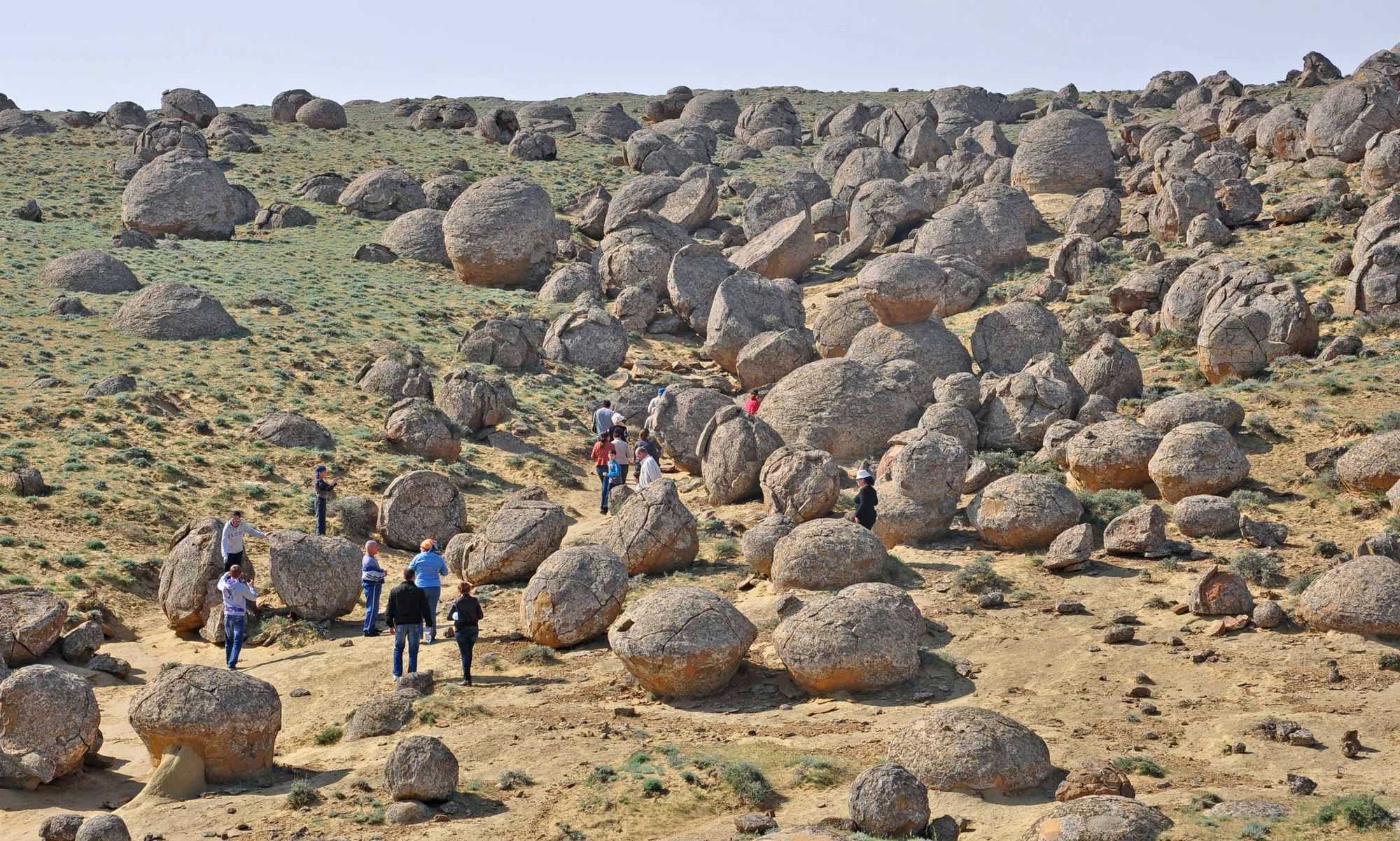
Historical Background
The Valley of Balls, or Torysh, is a geological formation believed to be over 70 million years old. The area was once submerged under the Tethys Sea, and the formations are remnants of the ancient marine environment. The Mangystau region, where Torysh is located, was inhabited by various nomadic tribes throughout history, adding a layer of cultural significance to the geological wonder.
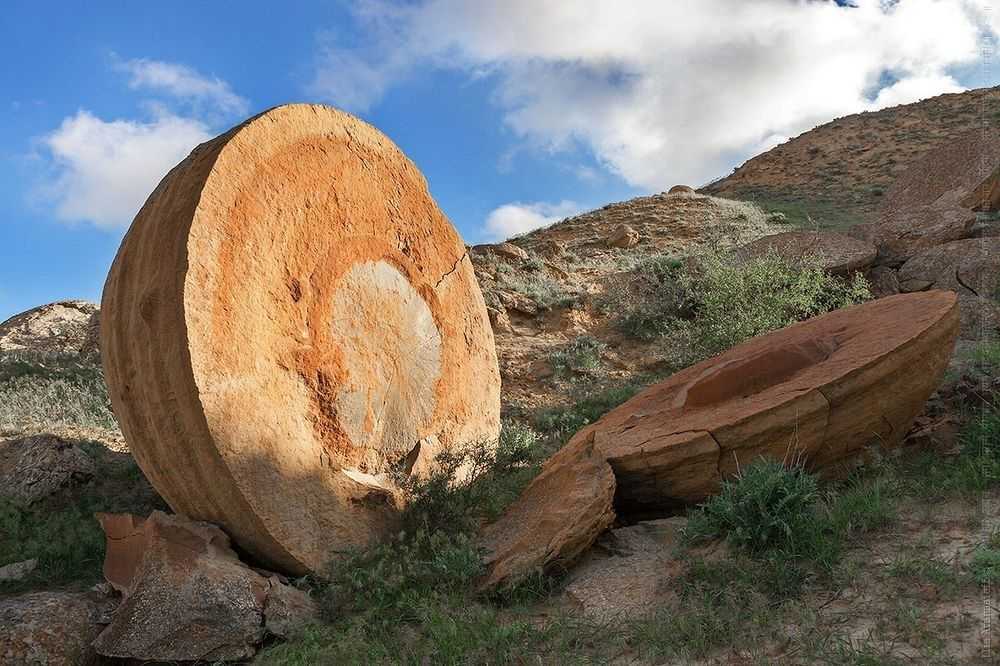
Architectural Highlights
The Valley of Balls is not a man-made structure, but a natural formation. The spherical stones, known as concretions, range in size from mere pebbles to massive orbs measuring up to three meters in diameter. They are composed primarily of sandstone and silicate cement. The process of their formation is believed to have started with a small particle or piece of shell, around which layers of sediment accumulated over millions of years, solidifying into the spherical shapes we see today. The concretions were then exposed by the erosion of the surrounding softer material.
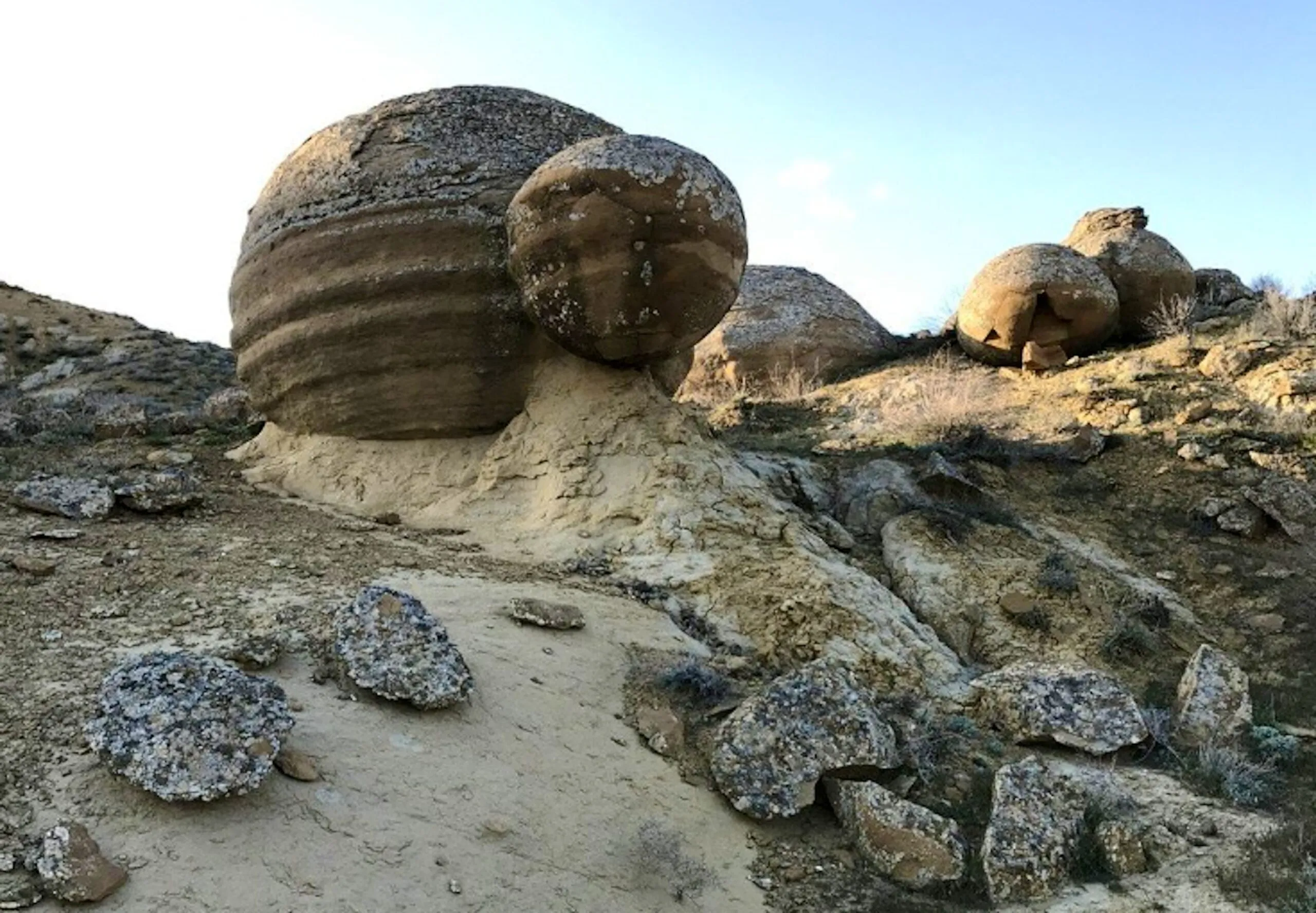
Theories and Interpretations
The exact process of the formation of these spherical concretions is still a subject of debate among geologists. The most widely accepted theory is that they are the result of a process known as concretion, where mineral-rich water flowing through porous rock leaves behind deposits that gradually accumulate around a nucleus, forming a spherical shape. However, the uniformity and sheer number of these formations in Torysh are unusual, leading to various other theories, including extraterrestrial influence and ancient human activity.
Despite the lack of human-made artifacts in the area, some local legends attribute the formations to ancient beings or divine intervention. The dating of the concretions has been done primarily through geological stratigraphy, a method that involves studying the layers of rock to determine their age.
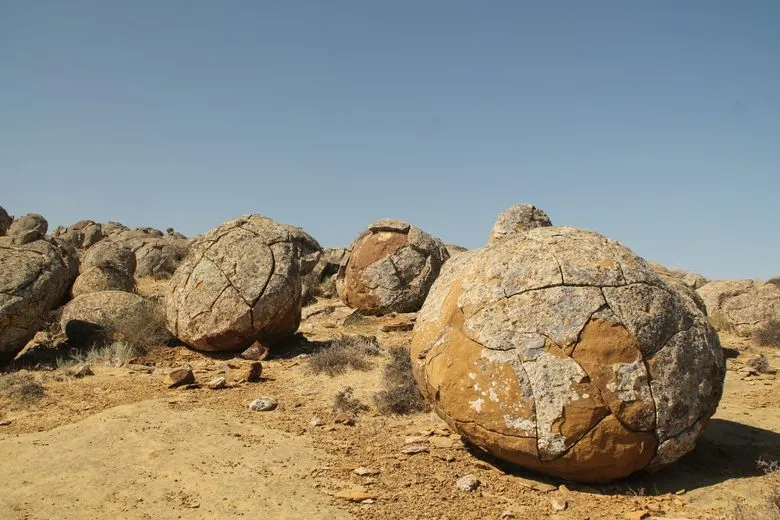
Good to know/Additional Information
Today, the Valley of Balls is a popular tourist destination, attracting visitors with its unique landscape and the mystery surrounding its formation. It is also a site of scientific interest, with ongoing research aimed at understanding the processes that led to the creation of these unusual formations. The area is easily accessible by car, and there are no restrictions on visiting, making it a must-see for anyone interested in natural history or geology.
Despite its popularity, Torysh remains a relatively untouched natural wonder, offering a glimpse into the Earth’s ancient past and the slow, powerful forces that shape our planet. Whether you’re a seasoned geologist, a history enthusiast, or simply a curious traveler, the Valley of Balls is sure to leave you in awe of nature’s capacity for mystery and beauty.
Image credit and more information https://geologyscience.com/gallery/geological-wonders/the-valley-of-balls-kazakhstan/

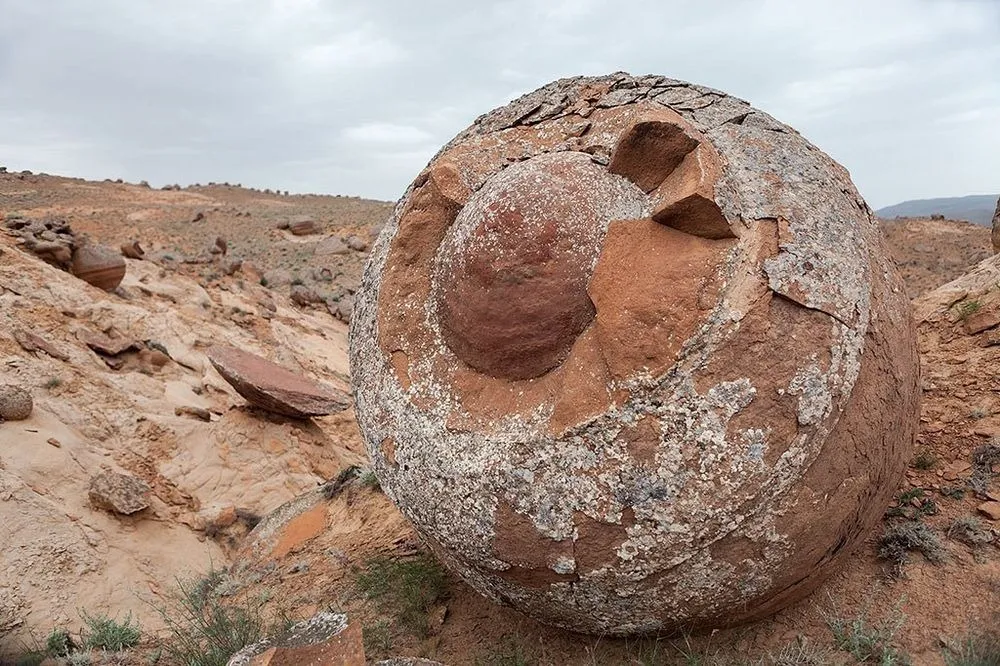
Is it the Saturnian moon Iapetus that exhibits a similar morphology? Also similar but much smaller objects of mostly iron(?) have been found deep underground in South Africa?
Not sure of the details.
Accorns. I bet their is an old tree stump aeound there close.